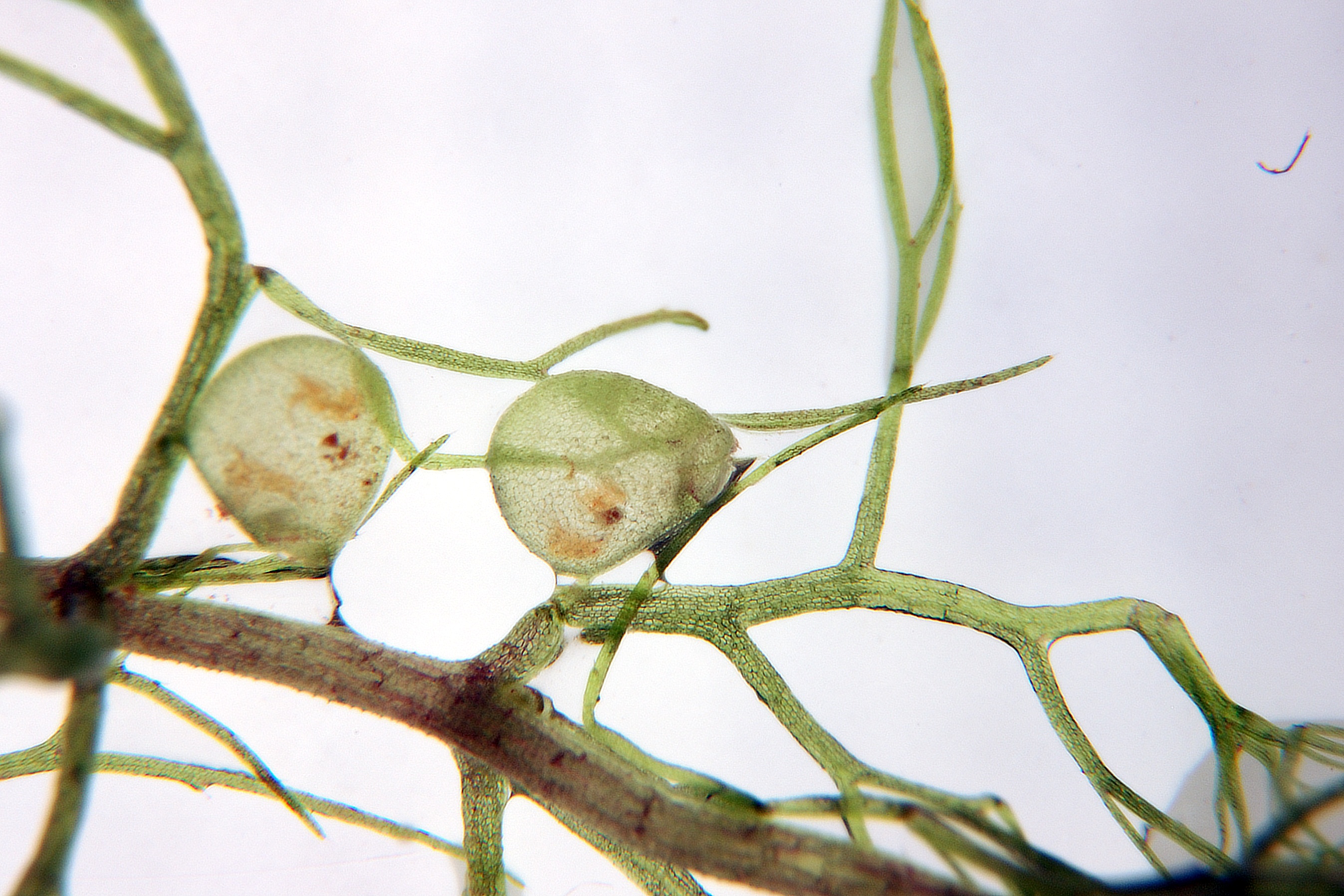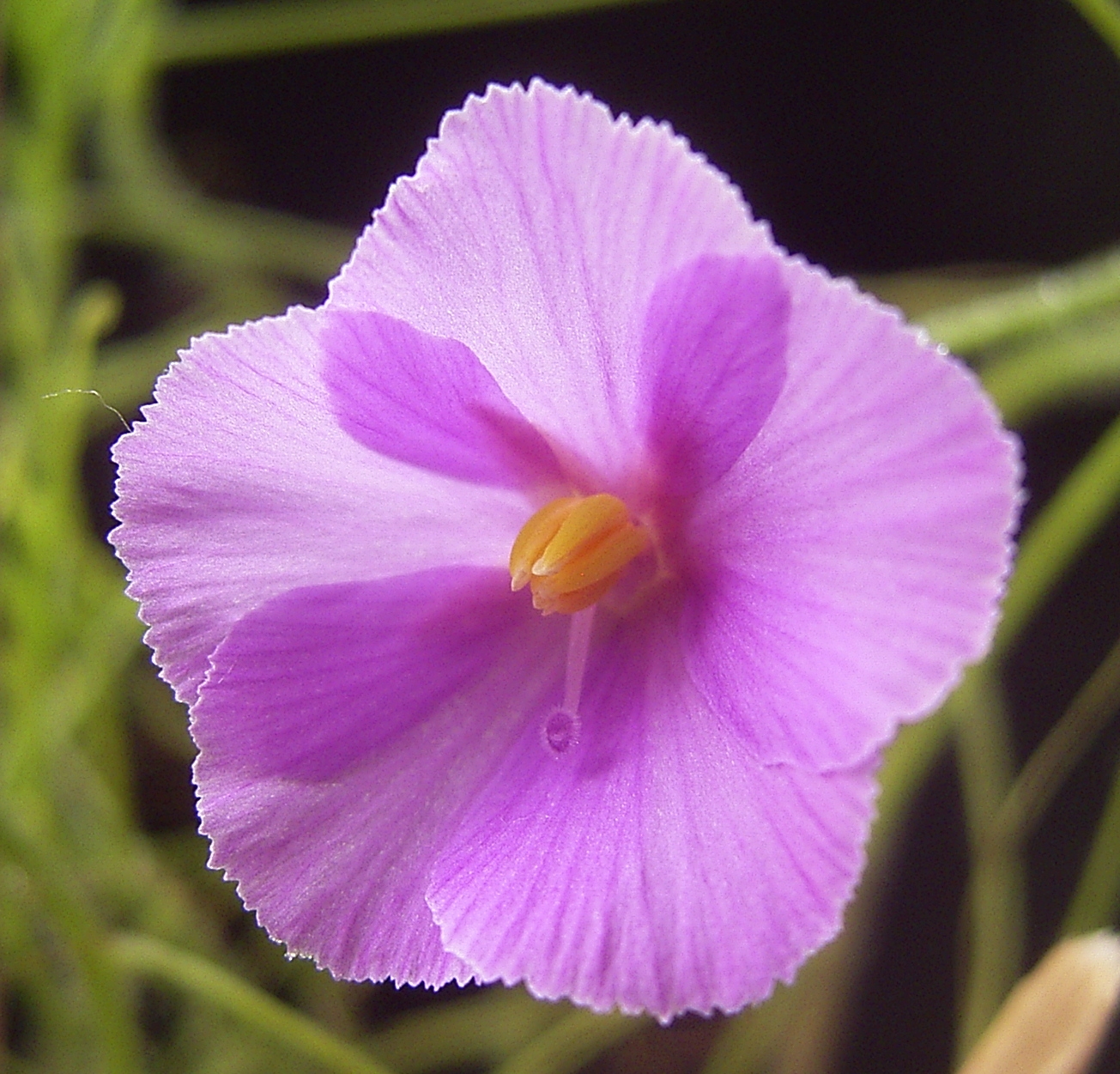|
Lamiales
The Lamiales (also known as the mint order) are an order of flowering plants in the asterids clade of the Eudicots. Under the APG IV system of flowering plant classification the order consists of 24 families, and includes about 23,810 species and 1,059 genera with representatives found all over the world. Well-known or economically important members of this order include aromatic, culinary, and medicinal herbs such as basil, mint, rosemary, sage, savory, marjoram, oregano, hyssop, thyme, lavender, perilla, lemon verbena, catnip, bee balm, wild dagga, and oriental motherwort, as well as olives, ash trees, teak, foxgloves, lilacs, jasmine, snapdragons, African violets, Jacarandas, Paulownias, butterfly bushes, sesame, and psyllium. Description Plant species within the order Lamiales are eudicots and are herbaceous or have woody stems. Zygomorphic flowers are common, having five petals with an upper lip of two petals and lower lip of three petals, but ... [...More Info...] [...Related Items...] OR: [Wikipedia] [Google] [Baidu] |
Phrymaceae
Phrymaceae, also known as the lopseed family, is a small family of flowering plants in the order Lamiales.Peter F. Stevens (2001 onwards). "Phrymaceae" At: Angiosperm Phylogeny Website. At: Botanical Databases At: Missouri Botanical Garden Website. (see ''External links'' below) It has a nearly cosmopolitan distribution, but is concentrated in two centers of diversity, one in Australia, the other in western North America. Members of this family occur in diverse habitats, including deserts, river banks and mountains. Phrymaceae is a family of mostly herbs and a few subshrubs, bearing tubular, bilaterally symmetric flowers. They can be annuals or perennials. Some of the Australian genera are aquatic or semiaquatic. One of these, ''Glossostigma'', is among the smallest of flowering plants, larger than the aquatic '' Lemna'' but similar in size to the terrestrial '' Lepuropetalon''. The smallest members of Phrymaceae are only a few centimeters long, while the largest are woody ... [...More Info...] [...Related Items...] OR: [Wikipedia] [Google] [Baidu] |
Bignoniaceae
Bignoniaceae () is a Family (biology), family of flowering plants in the Order (biology), order Lamiales commonly known as the bignonias or trumpet vines.Vernon H. Heywood, Richard K. Brummitt, Ole Seberg, and Alastair Culham. ''Flowering Plant Families of the World''. Firefly Books: Ontario, Canada. (2007). . It is not known to which of the other families in the order it is most closely related.Peter F. Stevens (2001 onwards). "Bignoniaceae" At: Angiosperm Phylogeny Website. At: Botanical Databases At: Missouri Botanical Garden Website. (see ''External links'' below) Nearly all of the Bignoniaceae are woody plants, but a few are subwoody, either as vines or subshrubs. A few more are herbaceous plants of high-elevation Montane ecology, montane habitats, in three exclusively herbaceous genera: ''Tourrettia'', ''Argylia'', and ''Incarvillea''. The family includes many lianas, climbing by tendrils, by twining, or rarely, by aerial roots. The largest Tribe (biology), tribe in the fam ... [...More Info...] [...Related Items...] OR: [Wikipedia] [Google] [Baidu] |
Calceolariaceae
Calceolariaceae is a family of flowering plants in the order Lamiales that has been recently segregated from Scrophulariaceae. The family includes three genera, '' Calceolaria'', '' Porodittia'', and '' Jovellana'', but analysis suggests that the monotypic ''Porodittia'' should be placed within ''Calceolaria''.Andersson, S. 2006. On the phylogeny of the genus ''Calceolaria'' (Calceolariaceae) as inferred from ITS and plastid ''matK'' sequences. ''Taxon'' 55: 125-137abstract. Recent molecular phylogenies that included ''Calceolaria'' have shown not only that this genus does not belong in Scrophulariaceae (or any of the numerous families recently segregated from Scrophulariaceae) but also that it is the sister clade to the majority of the other families of the Lamiales. Morphological and chemical characters also support the separation of Calceolariaceae from Scrophulariaceae and other Lamiales. Some recent studies have supported a sister-group relationship between Calceolariace ... [...More Info...] [...Related Items...] OR: [Wikipedia] [Google] [Baidu] |
Plantaginaceae
Plantaginaceae, the plantain family or veronica family, is a large, diverse family (biology), family of flowering plants in the order Lamiales that includes common flowers such as Antirrhinum, snapdragon and Digitalis, foxglove. It is unrelated to the true plantains, banana-like fruit also called "plantain". In older classifications, Plantaginaceae was the only family of the order Plantaginales, but numerous phylogenetic studies, summarized by the Angiosperm Phylogeny Group, have demonstrated that this taxon should be included within Lamiales. Overview The plantain family as traditionally circumscribed consisted of only three genera: ''Bougueria'', ''Littorella'', and ''Plantago''. However phylogenetic research has indicated that Plantaginaceae ''sensu stricto'' (in the strict sense) were nested within Scrophulariaceae (but forming a group that did not include the type genus of that family, ''Scrophularia''). Although Veronicaceae (1782) is the oldest family name for this group, ... [...More Info...] [...Related Items...] OR: [Wikipedia] [Google] [Baidu] |
Lentibulariaceae
Lentibulariaceae is a family of carnivorous plants containing three genera: '' Genlisea'', the corkscrew plants; ''Pinguicula'', the butterworts; and ''Utricularia'', the bladderworts. The genera ''Polypompholyx'' (two species of pink petticoats or fairy aprons) and ''Biovularia'' used to be regarded as fourth and fifth members of this family. ''Biovularia'' has been subsumed into ''Utricularia'', and ''Polypompholyx'' has been relegated to a subgenus of ''Utricularia''. Placement of the family used to be in the Scrophulariales, which has been merged with Lamiales in the Angiosperm Phylogeny Group system. Evolution Carnivory in plants appears to have evolved independently in five major angiosperm lineages and six orders: Poales, Caryophyllales, Oxalidales, Ericales, Alismatales and Lamiales. One common trait found in several Lamiales families that may have led to carnivory is the secretion of proteinase mucilage through leaf surfaces. This mucilage is generally used to preve ... [...More Info...] [...Related Items...] OR: [Wikipedia] [Google] [Baidu] |
Oleaceae
Oleaceae, also known as the olive family or sometimes the lilac family, is a taxonomic family of flowering shrubs, trees, and a few lianas in the order Lamiales. It presently comprises 28 genera, one of which is recently extinct.Peter S. Green. 2004. "Oleaceae". pages 296-306. In: Klaus Kubitzki (editor) and Joachim W. Kadereit (volume editor). ''The Families and Genera of Vascular Plants'' volume VII. Springer-Verlag: Berlin; Heidelberg, Germany. The extant genera include ''Cartrema'', which was resurrected in 2012. The number of species in the Oleaceae is variously estimated in a wide range around 700. The flowers are often numerous and highly odoriferous.Vernon H. Heywood, Richard K. Brummitt, Ole Seberg, and Alastair Culham. ''Flowering Plant Families of the World''. Firefly Books: Ontario, Canada. . The family has a subcosmopolitan distribution, ranging from the subarctic to the southernmost parts of Africa, Australia, and South America. Notable members include olive, as ... [...More Info...] [...Related Items...] OR: [Wikipedia] [Google] [Baidu] |
Linderniaceae
Linderniaceae is a family (biology), family of flowering plants in the order Lamiales, which consists of about 25 genus, genera and 265 species occurring worldwide. It is commonly known as the false-pimpernel family. ''Vandellia micrantha'' is eaten in Laos, but tastes bitter. Best known are the wishbone flowers ''Torenia fournieri'' and ''Torenia thouarsii'', which are used as Bedding (horticulture), bedding plants, especially in the tropics. ''Micranthemum'' is sold as an aquarium plant under the name 'baby tears'. In other classifications it used to be included within family Scrophulariaceae ''sensu lato'' or more recently in Plantaginaceae ''sensu lato'', but several authors have demonstrated that this taxon should be segregate (taxonomy), segregated Oxelman B., Kornhall, P., Olmstead, R. G. & Bremer, B. (2005). "Further disintegration of Scrophulariaceae". ''Taxon'' 54(2):411–425. from those families, as Linderniaceae, and it has been recognized by LAPG II and APG III. Rec ... [...More Info...] [...Related Items...] OR: [Wikipedia] [Google] [Baidu] |
Gesneriaceae
Gesneriaceae, the gesneriad family, is a family (biology), family of flowering plants consisting of about 152 genera and ca. 3,540 species in the tropics and subtropics of the Old World (almost all Didymocarpoideae) and the New World (most Gesnerioideae), with a very small number extending to temperate areas. Many species have colorful and showy flowers and are cultivated as ornamental plants. Etymology The family name is based on the genus ''Gesneria'', which honours Switzerland, Swiss naturalist and humanism, humanist Conrad Gessner. Description Most species are herbaceous plant, herbaceous perennial plant, perennials or subshrubs but a few are woody shrubs or small trees. The phyllotaxy is usually opposite and decussate, but leaves have a spiral or alternate arrangement in some groups. As with other members of the Lamiales the flowers have a (usually) zygomorphic corolla whose petals are fused into a tube and there is no one character that separates a gesneriad from any o ... [...More Info...] [...Related Items...] OR: [Wikipedia] [Google] [Baidu] |
Carlemanniaceae
The Carlemanniaceae are a tropical East Asian and Southeast Asian family of subshrub to herbaceous perennial flowering plants with 2 genera. Older systems of plant taxonomy place the two genera, ''Carlemannia'', and ''Silvianthus'' within the Caprifoliaceae or the Rubiaceae. The Angiosperm Phylogeny Group classification of 2003 places the group in the Lamiales, as a plant family more closely related to the Oleaceae than to the Caprifoliaceae The Caprifoliaceae or honeysuckle family is a clade of dicotyledonous flowering plants consisting of about 860 species in 33 to 42 genera, with a nearly cosmopolitan distribution. Centres of diversity are found in eastern North America and easte .... References Further reading * * Lamiales Lamiales families {{lamiales-stub ... [...More Info...] [...Related Items...] OR: [Wikipedia] [Google] [Baidu] |
Pedaliaceae
Pedaliaceae, the pedalium family or sesame family, is a flowering plant family classified in the order (biology), order Lamiales. The family includes sesame (''Sesamum indicum''), the source of sesame seeds. It comprises 13 genera and approximately 70 species. Eight genera are native to the African continent and one genus (''Uncarina'') is endemic to Madagascar. Four genera (''Sesamum'', ''Josephinia'', ''Pedalium'' and ''Dicerocaryum'') are mainly African natives but they also include regions to the east (including Madagascar, India, Sri Lanka, Malayan Islands and northern Australia).Ib Friis and Olof Ryding (Editors) The family has a diverse range of seed and fruit dispersal throughout the various species. Including; animal dispersal via burrs, carried by feet (in ''Dicerocaryum'', ''Harpagophytum'' and ''Josephinia'') or caught in the fur of passing animals (''Uncarina''), winged fruits using the wind for dispersal (''Holubia'' and ''Pterodiscus''), or even winged seeds ( ... [...More Info...] [...Related Items...] OR: [Wikipedia] [Google] [Baidu] |
Byblidaceae
''Byblis'' ( ) is a small genus of carnivorous plants, sometimes termed the rainbow plants for the attractive appearance of their mucilage-covered leaves in bright sunshine. Native to Australia and New Guinea, it is the only genus in the family Byblidaceae. The first species in the genus was described by the English botanist Richard Anthony Salisbury in 1808. Eight species are now recognised. ''Byblis'' species look very similar to ''Drosera'' and ''Drosophyllum'', but are distinguished by their zygomorphic flowers, with five curved stamens off to one side of the pistil. These genera are in fact not closely related; modern classifications place ''Byblis'' in the Lamiales, while the sundews and ''Drosophyllum'' are now placed in the Caryophyllales. Plant characteristics All species of the genus form upright growth supported by a weak, fibrous root system. The genus can be divided into two groups or "complexes": The ''B. liniflora'' complex and the ''B. gigantea'' complex. Lea ... [...More Info...] [...Related Items...] OR: [Wikipedia] [Google] [Baidu] |
Tetrachondraceae
Tetrachondraceae is a plant family in the order Lamiales The Lamiales (also known as the mint order) are an order of flowering plants in the asterids clade of the Eudicots. Under the APG IV system of flowering plant classification the order consists of 24 families, and includes about 23,810 species .... The family contains the two genera '' Polypremum'' and '' Tetrachondra'', which together comprise the three species: * '' Polypremum procumbens'' – juniper leaf or rustweed * '' Tetrachondra hamiltonii'' * '' Tetrachondra patagonica'' References Lamiales Lamiales families {{Lamiales-stub ... [...More Info...] [...Related Items...] OR: [Wikipedia] [Google] [Baidu] |





